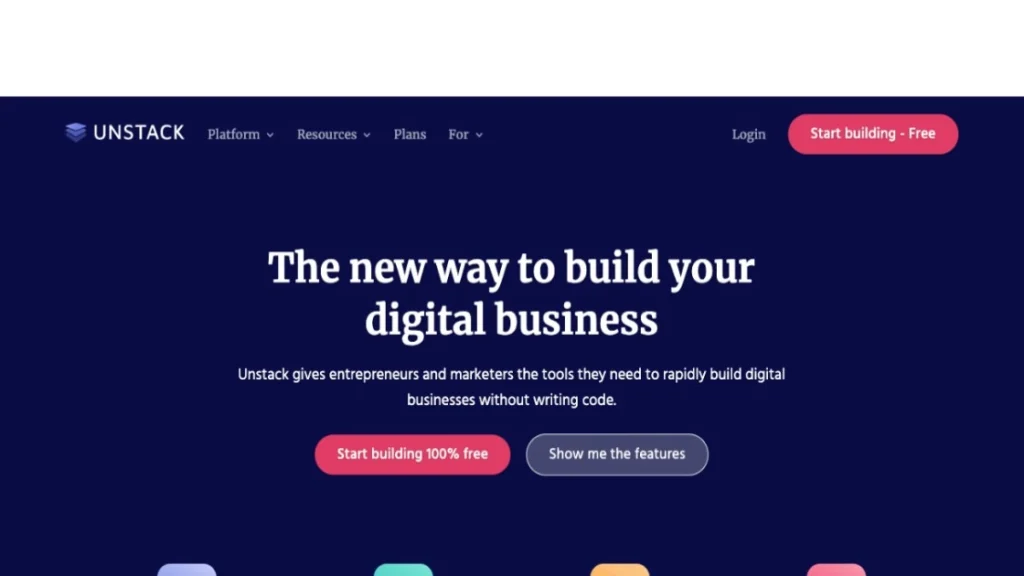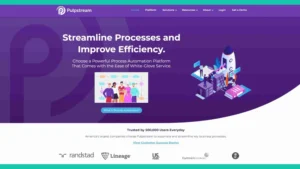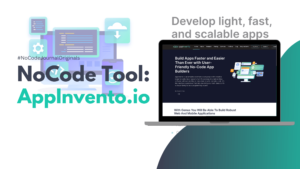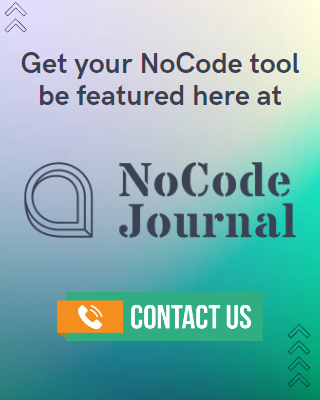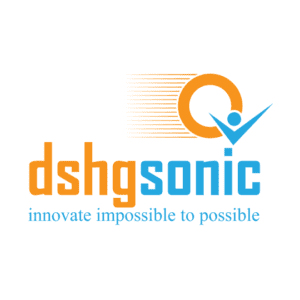The No-Code Revolution: Exploring The Top 11 Open-Source No-Code Platforms
- Manish Balakrishnan
In today’s rapidly evolving technological landscape, businesses and individuals are constantly seeking innovative solutions to streamline processes and accelerate development. No-code platforms have emerged as a game-changer, empowering users to create applications and automate workflows without the need for extensive coding skills. In this article, we will dive deep into the world of open-source no-code platforms, specifically focusing on the top 11 contenders.
Table of Contents
ToggleThe No-Code Revolution
Before we delve into the specifics of each open-source no-code platform, it’s essential to understand the broader context of the no-code revolution. No-code development platforms aim to democratize software creation, allowing non-technical individuals to participate actively in application development. This paradigm shift has several benefits, including:
·Accelerated Development: No-code platforms enable users to create software applications rapidly, reducing time-to-market.
·Cost Savings: By eliminating the need for skilled developers, organizations can save significantly on development costs.
·Increased Productivity: No-code tools empower users to automate repetitive tasks and streamline workflows, boosting overall productivity.
·Reduced Complexity: These platforms abstract complex coding processes, making it easier for anyone to create software solutions.
The Open-Source Advantage
Open-source software has gained popularity for its transparency, community-driven development, and cost-effectiveness. When it comes to no-code platforms, open source brings additional advantages:
·Customization: Open-source solutions can be tailored to specific needs, allowing users to modify the software according to their requirements.
·Community Support: The open-source community often provides active support, updates, and a wealth of resources to help users make the most of the platform.
·Cost Savings: Open-source, no-code platforms are typically free, which can be especially advantageous for small businesses and startups.
Exploring the Top 11 Open-Source No-Code Platforms
1.Budibase
Overview:
Budibase is an open-source, no-code platform designed to expedite the creation of business applications, enhancing team capabilities and boosting productivity. Renowned organizations such as IBM, Deloitte, and Proctor & Gamble have harnessed its power for their internal operations.
This versatile platform seamlessly integrates with a wide range of industry-leading databases, including but not limited to ArangoDB, MongoDB, DynamoDB, MySQL, and many others.
Key product features encompass:
·Rapid Internal Tool Development: Swiftly construct internal tools to empower every team member, enabling them to work efficiently and effectively.
·Effortless Form Setup and Automation: Seamlessly establish and automate forms tailored to your specific business needs, streamlining data collection and management.
·Intuitive Admin Panels: Easily create and manage admin panels for efficient data control and organization, ensuring smooth operations within your organization.
·User-Friendly Team and Customer Portals: Develop straightforward and user-friendly portals for both internal teams and external customers, enhancing collaboration and engagement.
2. Rowy
Overview:
Rowy is an open-source platform designed to manage data within an intuitive spreadsheet-like user interface (UI). This platform is built to simplify data management tasks and make it more accessible to a wide range of users.
Key Features:
·Rowy offers real-time collaboration capabilities, allowing multiple team members to work simultaneously on the same application or dataset.
·Rowy supports a wide variety of fields, exceeding 30 in number.
·Rowy provides robust role-based access control(RBAC) features.
·Rowy emphasizes data security and privacy by keeping your application’s data within your Firebase and Fire store environment.
·Rowy comes equipped with a built-in Visual Studio Code (VS Code) editor, which is a powerful code editor used by developers. This means that developers can write and extend code directly within the platform, providing flexibility and customization options beyond the visual interface.
3. Node-Red
Overview:
Node-Red is an open-source, no-code platform specifically designed for IoT projects. It offers a user-friendly, browser-based editor that simplifies the process of connecting various elements using a diverse selection of nodes from its palette. These flows can be effortlessly deployed to its run time environment with a single click.
This platform boasts an extensive repository of nodes and pre-configured workflows, expediting the creation of automated processes. The intuitive drag-and-drop editor empowers users to easily add, remove, or modify nodes within their workflows, making IoT project development more accessible and efficient.
Key features
·Pre-Built Functionality: Node-RED provides a range of pre-built functionality and a user-friendly interface, making it easy for both beginners and experts to start building IoT applications quickly. This reduces development time and effort.
·Open-Source and Community Support: Being an open-source platform, Node-RED benefits from a large and active community of developers and users. This means you can find extensive resources, plugins, and support, fostering innovation and problem-solving within the IoT community.
·Heterogeneous Environments: Node-RED is well-suited for heterogeneous IoT environments, where devices and sensors may come from different manufacturers and use various communication protocols. Its flexible node palette and extensibility allow it to adapt to diverse IoT ecosystems seamlessly.
·Cross-Platform Execution: Node-RED is built onNode.js, which means it can run on a wide range of devices and platforms whereNode.js can be installed. This flexibility allows you to deploy Node-RED on various hardware and operating systems, providing scalability and compatibility.
·Low Hardware Requirements: Node-RED is light weight and can run on constrained hardware, making it suitable for IoT devices with limited computing resources. This efficiency is crucial for IoT applications where power and resources are often at a premium.
4.StackStorm
Overview:
StackStorm’s focus on integration, extensibility, and rule-driven automation makes it a valuable tool for DevOps teams looking to streamline and automate their workflows while leveraging their existing infrastructure and tools.
Key features:
·Integration with Existing Infrastructure through Sensors: StackStorm provides the ability to integrate with your existing infrastructure by using sensors. Sensors allow StackStorm to monitor and react to changes or events in your environment. This is crucial for automating task sand workflows that involve various components of your infrastructure.
·Outbound Integration through Actions: StackStorm enables automation through outbound integrations known as actions.
·Packs for Units of Content Deployment: StackStorm organizes automation content into units called “packs.” These packs contain the necessary scripts, configurations, and workflows required for specific automation tasks.
·External Events as Triggers: StackStorm uses external events, known as triggers, to initiate automation workflows.
·Rules to Map Triggers to Actions: StackStorm uses rules to define how triggers should be mapped to actions. Rules specify the conditions under which a specific trigger should trigger an action. This rule-based approach provides granular control over automation, allowing you to define precisely when and how certain actions should be taken in response to events.
5.Convertigo
Overview:
Convertigo is an enterprise-grade open-source platform thats specializes in both no-code and low-code development. It is designed to meet the needs of businesses and enterprises seeking to accelerate application development while maintaining flexibility and scalability. Convertigo consists of two parts: Convertigo No-Code Studio and Convertigo Low-Code Studio.
Key Features:
·Convertigo prioritizes data security, ensuring that your applications and data are protected against unauthorized access and breaches. This is especially crucial for enterprise-level applications that handle sensitive information.
·Convertigo allows you to define and manage complex back-end business logic and workflows. This is essential for creating applications that automate business processes and integrate with various data sources and services.
·It offers flexibility in deployment options. You can choose to run Convertigo on the cloud or on-premises infrastructure, depending on your organization’s preferences and requirements.
·Convertigo provides a wide range of connectors for data sources and APIs. These connectors simplify data integration, allowing you to easily access and manipulate data from different systems and services, streamlining application development.
·It also includes features such as a task scheduler, which enables you to automate tasks and processes on a scheduled basis. User authentication ensures that only authorized individuals can access your applications and data, enhancing security and control.
6.Baserow
Overview:
Baserow is an open-source platform that allows users to create online databases with a variety of hosting options. It’s designed as an alternative to popular services like Airtable and provides users with the flexibility to self-host their databases or use the SaaS (Software as a Service) offering on the Baserow website.
Key features
·Flexibility to Cater to Your Needs: Baserow allows users to create highly customized databases to suit their specific requirements. This flexibility includes defining custom fields, relationships, and templates, making it adaptable for various use cases and industries.
·Real-Time Collaboration: Baserow facilitates real-time collaboration, allowing multiple users to work on the same database simultaneously. This feature is particularly valuable for teams and organizations that need to collaborate on data entry, analysis, or management.
·Unlimited Rows: Baserow offers the advantage of unlimited rows, enabling users to store and manage a large volume of data without limitations. This scalability is essential for projects that involve extensive datasets.
·Easy-to-Use, Single Interface: Baserow is designed with a user-friendly, no-code/low-code interface. Its intuitive design simplifies the database creation and management process, making it accessible to individuals with varying levels of technical expertise.
·Simple Integration with Other Software: Baserow provides integration capabilities, allowing users to connect their databases with other software applications and services. This seamless integration enhances workflow efficiency and enables users to leverage their data in various contexts.
7.Basetool
Overview:
Basetool is a platform designed to enhance data management and collaboration for businesses. It aims to simplify data handling, allowing businesses to focus on their core operations while ensuring data security and accessibility.
Key features:
·Interface Optimized for Mobile: Basetool provides a user-friendly interface that is optimized for mobile devices. This ensures that users can access and manage their data from smartphones and tablets, making it convenient for on-the-go business operations.
·Permissions and Access Control: The platform includes robust permission settings, enabling administrators to control who can access and handle data. This feature enhances data security by limiting access to authorized users only.
·Self-Hosted Option: Basetool offers the flexibility of self-hosting, allowing businesses to have control over their data infrastructure. This can be particularly appealing to organizations with specific security or compliance requirements.
·Automatic Matching of Database Columns: Its implifies data import by automatically matching database columns to the appropriate Basetool fields. This streamlines the data integration process, reducing the manual effort required.
·Data Security: Basetool places a strong emphasis on data security, ensuring that sensitive information is protected.
·Centralized Data Sources: Basetool consolidates data sources into a single location. This centralized approach simplifies data management, making it easier for businesses to organize and access their data assets.
8.Gdevelop
Overview:
GDevelop is a game development platform known for its ease of use and versatility. GDevelop’s user-friendly interface and robust feature set make it accessible to both beginners and experienced game developers. Its ability to export games to various platforms like iOS, Steam, Android, and more ensures that your games can reach a wide audience on different devices.
Key features
·Ready-Made Objects and Asset Store: GDevelop offers a variety of pre-designed objects and assets that can be readily used in your game development projects.
·Visual Effects with Shaders: GDevelop includes a visual effects system that allows you to apply shaders to your game objects and scenes.
·Advanced Levels and Interfaces: GDevelop provides tools and features for creating advanced levels and user interfaces. This includes the ability to design intricate game levels and create user-friendly interfaces, enhancing the overall player experience.
·Live Preview for Quick Development: GDevelop offers a live preview feature that allows you to see your game in action as you work on it. This real-time preview enables quick development and testing ,helping you iterate on your game design more efficiently.
·Exportable Behaviors: GDevelop’s behavior system is highly extensible. You can create custom behaviors for game objects and export them to reuse in other projects.
9. WordPress
Overview:
WordPress, which was forked from the b2/catalog software in2003 by Mike Little and Matt Mullenweg, has indeed become a widely used and influential open-source platform for website and content management.
Key Features
·WordPress offers a vast ecosystem of themes and templates, both free and premium, allowing users to customize the look and feel of their websites.
·WordPress is known for its SEO-friendly architecture. It provides tools and plugins that help users optimize their content for search engines, making it easier to improve their website’s visibility in search results.
·With the increasing use of mobile devices, WordPress ensures that websites built on its platform are responsive.
·WordPress is highly customizable, allowing users to optimize their websites for performance. Additionally, various caching and optimization plugins are available to enhance website speed and efficiency.
·WordPress’s user-friendly interface makes it accessible to users with varying levels of technical expertise.
·WordPress has a dedicated security team and a community of developers working continuously to enhance its security. Regular updates and the availability of security plugins help protect websites from vulnerabilities.
·WordPress provides a media library where users can easily upload, organize, and manage images, videos, and other media content. This simplifies the process of adding multimedia elements to posts and pages.
10. REI3
Overview:
REI3 appears to be a promising platform for small- to medium-sized enterprises (SMEs) that offers several key features designed to simplify application development and deployment.
·REI3 is both free to use and open source, which means there are no licensing fees, and users have access to the platform’s source code. This makes it cost-effective for SMEs with limited budgets.
·The platform provides ready-to-use applications for basic functionalities. These pre-built applications can be deployed with a vanilla (standard) implementation, saving time and effort in development.
·Applications developed using REI3 are designed to be lean and resource-efficient. They are automatically compressed and cached, which helps optimize performance and reduce resource consumption.
·Applications created with REI3 can be exported, transferred to other instances, and shared within the REI3 community. This sharing functionality fosters collaboration and allows users to leverage each other’s work.
·REI3’s builder is designed for ease of use, making it accessible to users with varying levels of technical expertise.
·Users can benefit from regular updates andreleases that expand the platform’s capabilities. This ensures that REI3remains up-to-date with the latest features and improvements.
11. ToolJet
Overview:
ToolJet is an open-source platform designed to simplify the development of internal tools critical to business processes. It offers a range of features to streamline the creation of complex frontends without requiring extensive CSS, React, or HTML coding.
Key features
·ToolJet provides more than 35 in-built UI components that can be easily integrated into your frontend application using adrag-and-drop interface.
·ToolJet supports collaboration, enabling multiple team members to work together on building and maintaining internaltools. This collaborative approach enhances productivity and fosters teamwork.
·ToolJet includes a state inspector similar to Redux, a popular state management library for JavaScript applications.
·ToolJet facilitates integration with more than100 external tools and services.
·While ToolJet offers a variety of built-in components, you can also import custom components to extend the functionality of your applications.
Choosing the Right Open-Source No-Code Platform
Selecting the best open-source no-code platform for your needs depends on various factors, including:
· Use Case: Consider the type of applications you intend to build—whether they are web apps, mobile apps, databases, or automation workflows.
· Ease of Use: Evaluate the platform’s user-friendliness, especially if you lack technical expertise.
· Customization: Determine the level of customization you require for your projects. Some platforms offer more flexibility than others.
· Community Support: Assess the availability of a supportive and active community for troubleshooting and updates.
· Integration: Check if the platform integrates seamlessly with the tools and services you use in your organization.
Embracing the No-Code Future
The rise of open-source, no-code platforms signify a shift in the way software is created and maintained. These platforms empower individuals and businesses to be more self-reliant in their development endeavors. As technology continues to advance, the no-code revolution will likely expand, offering even more possibilities for innovation.
Conclusion
The open-source no-code landscape is rich with options, each catering to different needs and preferences. Whether you’re a startup looking to streamline operations, a non-technical entrepreneur with a brilliant app idea, or an enterprise seeking to automate workflows, there’s likely an open-source no-code platform that fits your requirements. The future of software development is becoming increasingly accessible to everyone, thanks to the no-code revolution and the thriving community of open-source developers behind these platforms.
Share
follow us
Explore related posts


NoCode Tool: Keenforms
Why Is NoCode Gaining Traction
